Welcome to the Amira-Avizo Software Use Case Gallery
Below you will find a collection of use cases of our 3D data visualization and analysis software. These use cases include scientific publications, articles, papers, posters, presentations or even videos that show how Amira-Avizo Software is used to address various scientific and industrial research topics.
Use the Domain selector to filter by main application area, and use the Search box to enter keywords related to specific topics you are interested in.

Three dimensional (3D) composites were proposed over 40 years ago in an attempt to overcome the shortcomings of 2D laminates, by incorporating fibres into the through-thickness direction. 3D weaving offer significant manufacturing benefits as well as creating versatile textiles having a range of 3D architectures.
The development of fatigue damage in a glass fibre modified layer-to-layer three dimensional (3D) woven composite has been followed by time-lapse X-ray computed tomograp... Read more
B. Yu, R. Blanc, C. Soutis, P.J. Withers
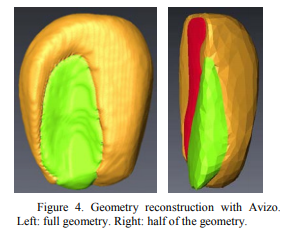
Drying of Corn Kernels: From Experimental Images to Multiscale Multiphysics Modeling
This work demonstrated the importance and feasibility of experimental image
to simulation workflow. The workflow is successfully applied to a food processing study, where multiphysics and multiscale modeling
based on 3D experimental image reconstruction contributes to the preservation of corn, one of the major food sources for the world population.
Corn kernels have a complex structure as they are composed of a pericarp layer outside and contain hard and soft endosperm and ... Read more
Pawan S. Takhar, and Shuang Zhang
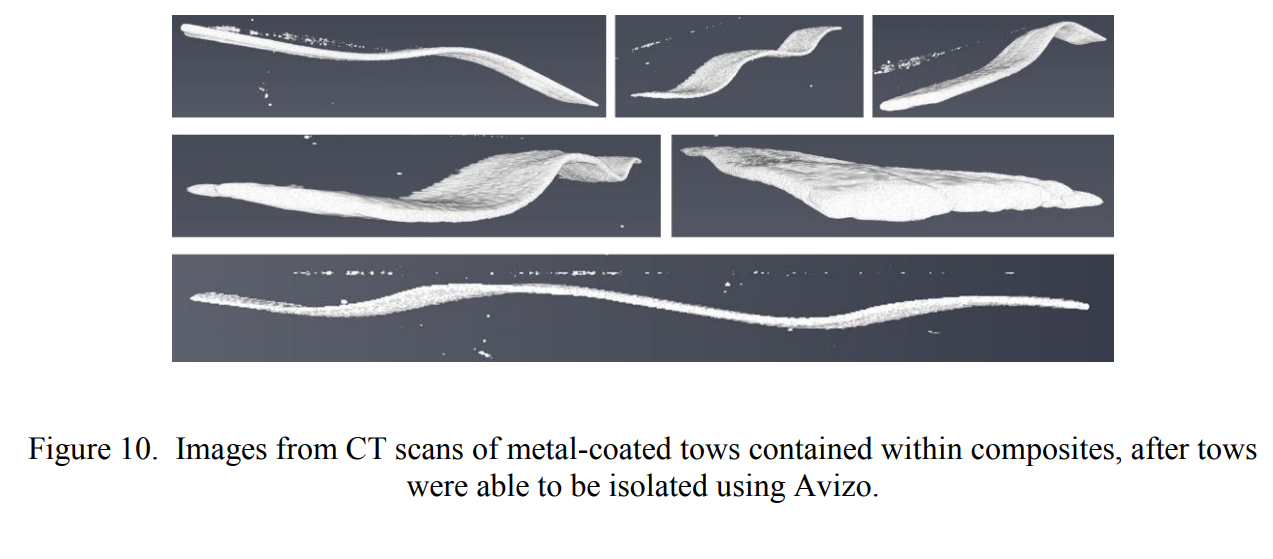
Investigation of Carbon Fiber Architecture in Braided Composites Using X-Ray CT Inspection
During the fabrication of braided carbon fiber composite materials, process variations occur which affect the fiber architecture.
Quantitative measurements of local and global fiber architecture variations are needed to determine the potential effect of process variations on mechanical properties of the cured composite. Although non-destructive inspection via X-ray CT imaging is a promising approach, difficulties in quantitative analysis of the data arise due to the similar densities o... Read more
Daniel J. Rhoads, Sandi G. Miller, Gary D. Roberts, Richard W. Rauser, Dmitry Golovaty, J. Patrick Wilber, Malena I. Español
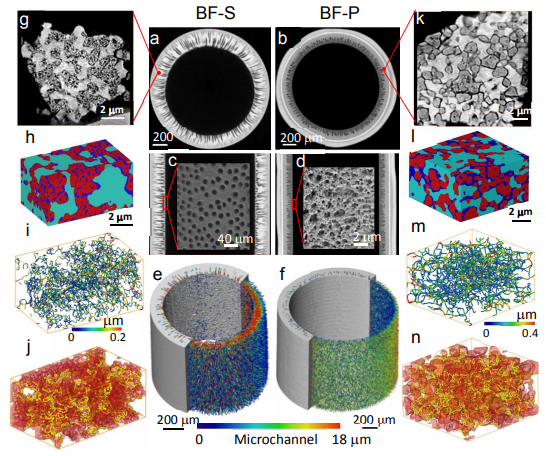
Mass transport can significantly limit the rate of reaction and lead to concentration polarization in electrochemical devices, especially under the conditions of high operating current density.
In this study we investigate hierarchically structured micro-tubular solid
oxide fuel cells (MT-SOFC) fabricated by phase inversion technique and quantitatively assess the mass transport and electrochemical performance improvement compared to a conventional tubular SOFC. We present pioneer... Read more
Xuekun Lu, Tao Li, Antonio Bertei, Jason I S Cho , Thomas M.M. Heenan , Rabuni Mohamad, Kang Li, Dan JL Brett, Paul R Shearing
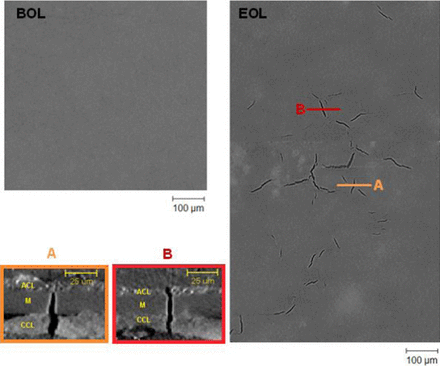
3D Failure Analysis of Pure Mechanical and Pure Chemical Degradation in Fuel Cell Membranes
Lifetime-limiting failure of fuel cell membranes is generally attributed to their chemical and/or mechanical degradation. Although both of these degradation modes occur concurrently during operational duty cycles, their uncoupled investigations can provide useful insights into their individual characteristics and consequential impacts on the overall membrane failure.
X-ray computed tomography is emerging as an advantageous tool for fuel cell failure analysis due to its non-destructive ... Read more
Yadvinder Singh, Francesco P. Orfino, Monica Dutta, and Erik Kjeang
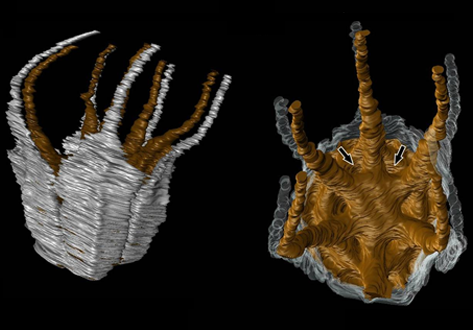
Angiosperm-dominated floras of the Late Cretaceous are essential for understanding the evolutionary, ecological, and geographic radiation of flowering plants.
The Late Cretaceous–early Paleogene Deccan Intertrappean Beds of India contain angiosperm-dominated plant fossil assemblages known from multiple localities in central India. Numerous monocots have been documented from these assemblages, providing a window into an important but poorly understood time in their diversification. On... Read more
Kelly K.S. Matsunaga, Selena Y. Smith, Steven R. Manchester, Dashrath Kapgate, Deepak Ramteke, Amin Garbout, and Herminso Villarraga-Gómez
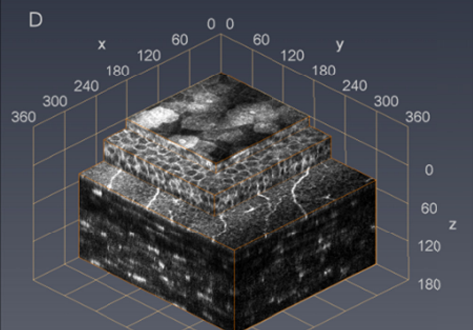
Cellular in vivo 3D imaging of the cornea by confocal laser scanning microscopy
We present an in vivo confocal laser scanning microscopy based method for large 3D reconstruction of the cornea on a cellular level with cropped volume sizes up to 266 x 286x 396 µm3.
The microscope objective used is equipped with a piezo actuator for automated, fast and precise closed-loop focal plane control. Furthermore, we present a novel concave surface contact cap, which significantly reduces eye movements by up to 87%, hence increasing the overlapping image area of the whole st... Read more
Sebastian Bohn, Karsten Sperlich, Stephan Allgeier, Andreas Bartschat, Ruby Prakasam, Klaus-martin Reichert, Heinrich Stolz, Rudolf Guthoff, Ralf Mikut, Bernd Köhler, and Oliver Stachs
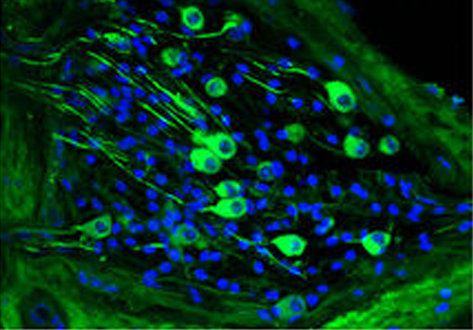
Chronic cigarette smoke exposure drives spiral ganglion neuron loss in mice
Tobacco use is associated with an increased risk of hearing loss in older individuals, suggesting cigarette smoke (CS) exposure may target the peripheral auditory organs. However, the effects of CS exposure on general cochlear anatomy have not previously been explored.
Here we compare control and chronic CS exposed cochleae from adult mice to assess changes in structure and cell survival. Two-photon imaging techniques, including the imaging of second harmonic generation (SHG) and two-p... Read more
Stephen T. Paquette, Ryan P. Dawes, Isaac K. Sundar, Irfan Rahman, Edward B. Brown & Patricia M. White
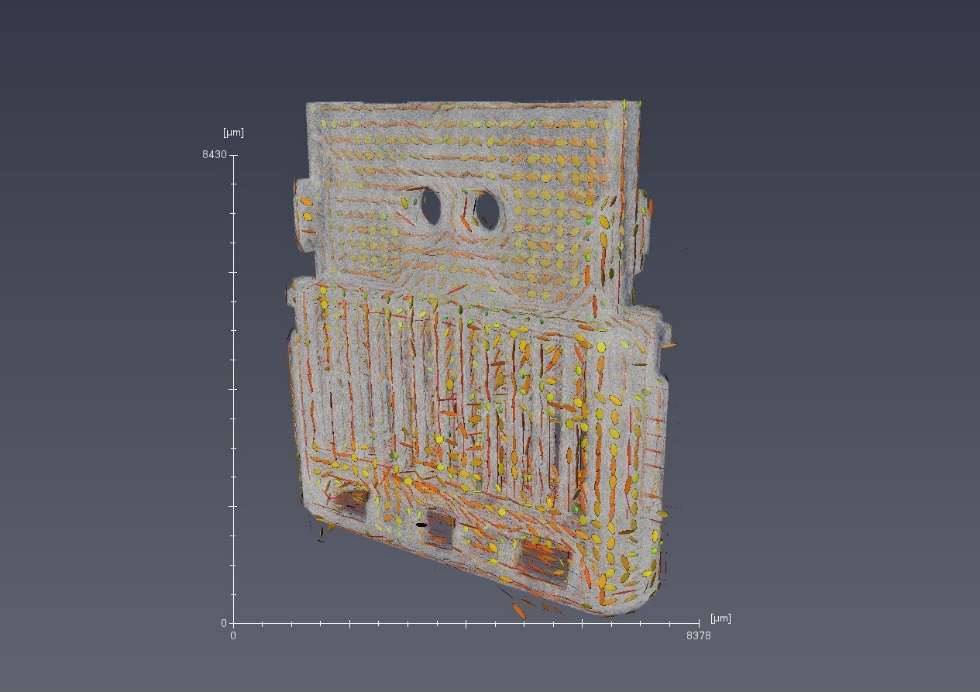
Glass fiber length and orientation analysis of reinforced polymers (GFRP)
Royal DSM is a global science-based company active in health, nutrition and
materials. Within DSM’s Materials Cluster DSM Engineering Plastics is a global player in specialty plastics. These materials are used in components for the electrical and electronics, automotive, flexible food packaging and consumer goods industries.
A typical product made of DSM Engineering Plastics’ polymer portfolio are USB-C connectors. Key performance indicators for this application are dimension... Read more
Jennifer Schillings, Arno Wilbers and Joachim Loos, DSM Materials Science Center, Geleen, The Netherlands
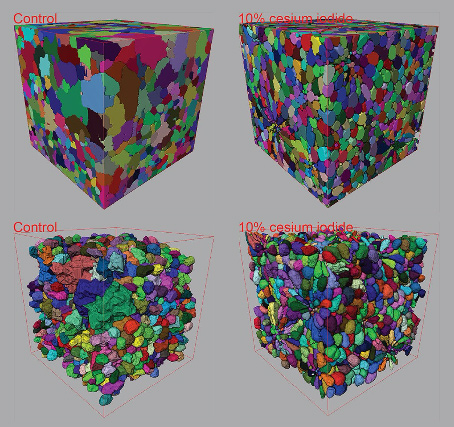
Contrast-enhanced 3D micro-CT of plant tissues using different impregnation techniques
X-ray micro-CT has increasingly been used for 3D imaging of plant structures. At the micrometer reso-lution however, limitations in X-ray contrast often lead to datasets with poor qualitative and quantitative measures, especially within dense cell clusters of plant tissue specimens. The current study developed protocols for delivering a cesium based contrast enhancing solution to varying plant tissue specimens for the purpose of improving 3D tissue structure characterization within plant spec... Read more
Zi Wang, Pieter Verboven and Bart Nicolai, Department of Biosystems KU Leuven – University of Leuven Willem de Croylaan, Leuven Belgium
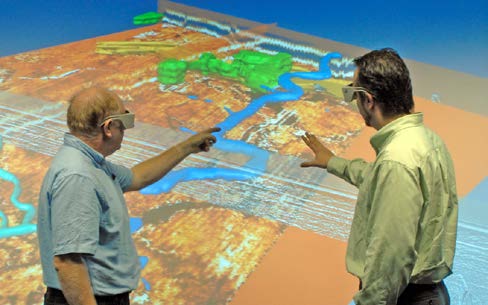
The University of Birmingham uses Avizo software to explore the North Sea as it was 10,000 years ago
The IBM Visual and Spatial Technology Centre (VISTA) specialize in large scale data capture, analysis and visualization for the Arts and Humanities at the University of Birmingham, UK. The VISTA Centre supports interdisciplinary academic research and application development for visualization, spatial analysis and imaging using state-ofthe- art technology.
Avizo software is a fundamental tool that provides new opportunities for data... Read more
IBM Visual and Spatial Technology Centre, Institute of Archaeology, Birmingham Archaeology, University of Birmingham, UK
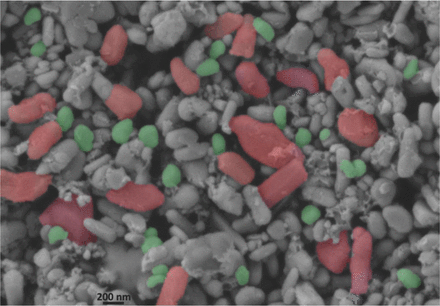
Enhanced Imaging of Lithium Ion Battery Electrode Materials
The authors present for the first time a new methodology of contrast enhancement for 3D imaging, including novel advanced quantification, on a commercial Lithium Iron Phosphate (LFP) LiFePO4 cathode. The aim of this work is to improve the quality of the 3D imaging of challenging battery materials by developing methods to increase contrast between otherwise previously poorly differentiated phases. This is necessary to enable capture of the real geometry of electrode microstructures... Read more
Moshiel Biton, Vladimir Yufit, Farid Tariq, Masashi Kishimoto and Nigel Brandon
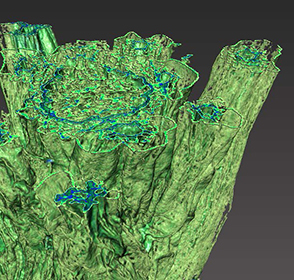
Unilever uses Avizo software to visualize and understand food and detergent structures
Food and detergent products are composed of complex micro structures. With modern microscopic techniques we can make them visible. The microstructure greatly affects macroscopic properties such as appearance, taste, mouth feel and solubility. Making these structures visible and quantifying them is essential to the development of products with optimal product properties. A broad range of imaging techniques is used to visualize microstructure elements at different length scales. For example, X-... Read more
Gerard van Dalen, Unilever R&D Vlaardingen (The Netherlands)
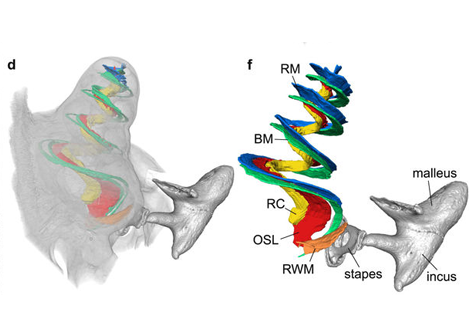
Propagation-based phase-contrast x-ray tomography of cochlea using a compact synchrotron source
We demonstrate that phase retrieval and tomographic imaging at the organ level of small animals can be advantageously carried out using the monochromatic radiation emitted by a compact x-ray light source, without further optical elements apart from source and detector. This approach allows to carry out microtomography experiments which – due to the large performance gap with respect to conventional laboratory instruments – so far were usually limited to synchrotron sources. We dem... Read more
Mareike Töpperwien, Regine Gradl, Daniel Keppeler, Malte Vassholz, Alexander Meyer, Roland Hessler, Klaus Achterhold, Bernhard Gleich, Martin Dierolf, Franz Pfeiffer, Tobias Moser & Tim Salditt
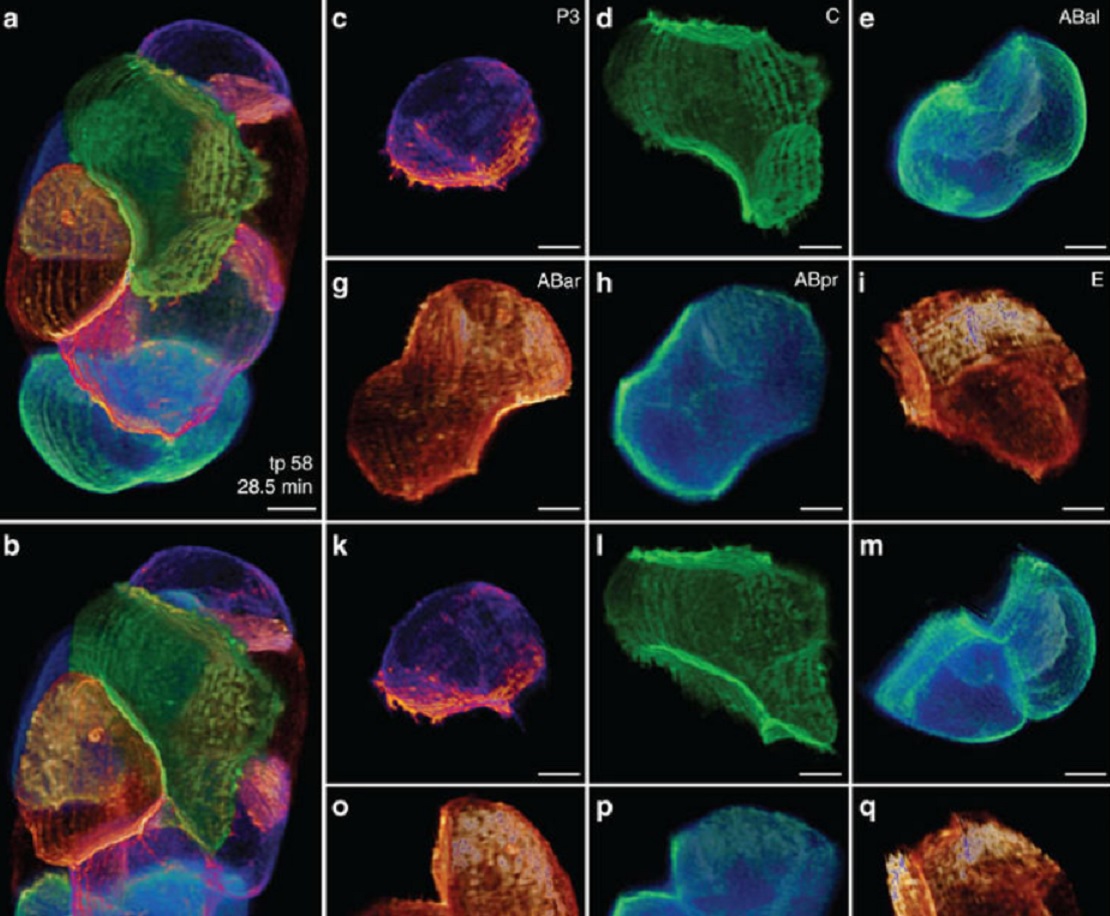
Despite the progress made in selective plane illumination microscopy, high-resolution 3D live imaging of multicellular specimens remains challenging. Tiling light-sheet selective plane illumination microscopy (TLS-SPIM) with real-time light-sheet optimization was developed to respond to the challenge…
Read more
Qinyi Fu, Benjamin L. Martin, David Q. Matus, Liang Gao
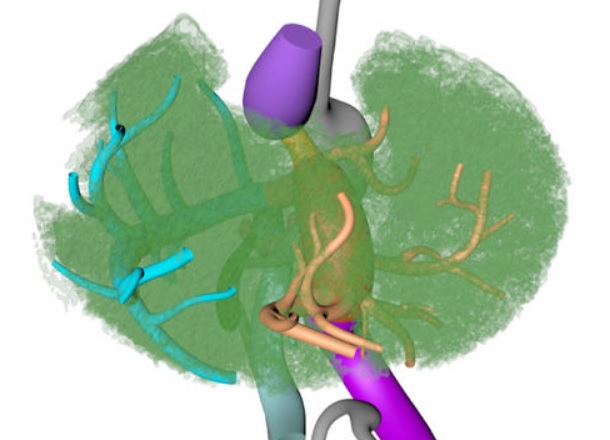
Couinaud based his well-known subdivision of the liver into (surgical) segments on the branching order of portal veins and the location of hepatic veins. However, both segment boundaries and number remain controversial due to an incomplete understanding of the role of liver lobes and vascular physiology on hepatic venous development. Human embryonic livers (5–10 weeks of development) were visualized with Amira 3D-reconstruction and Cinema 4D-remodeling software.
Read more
Jill P. J. M. Hikspoors, Mathijs M. J. P. Peeters, Nutmethee Kruepunga, Hayelom K. Mekonen, Greet M. C. Mommen, S. Eleonore Köhler & Wouter H. Lamers
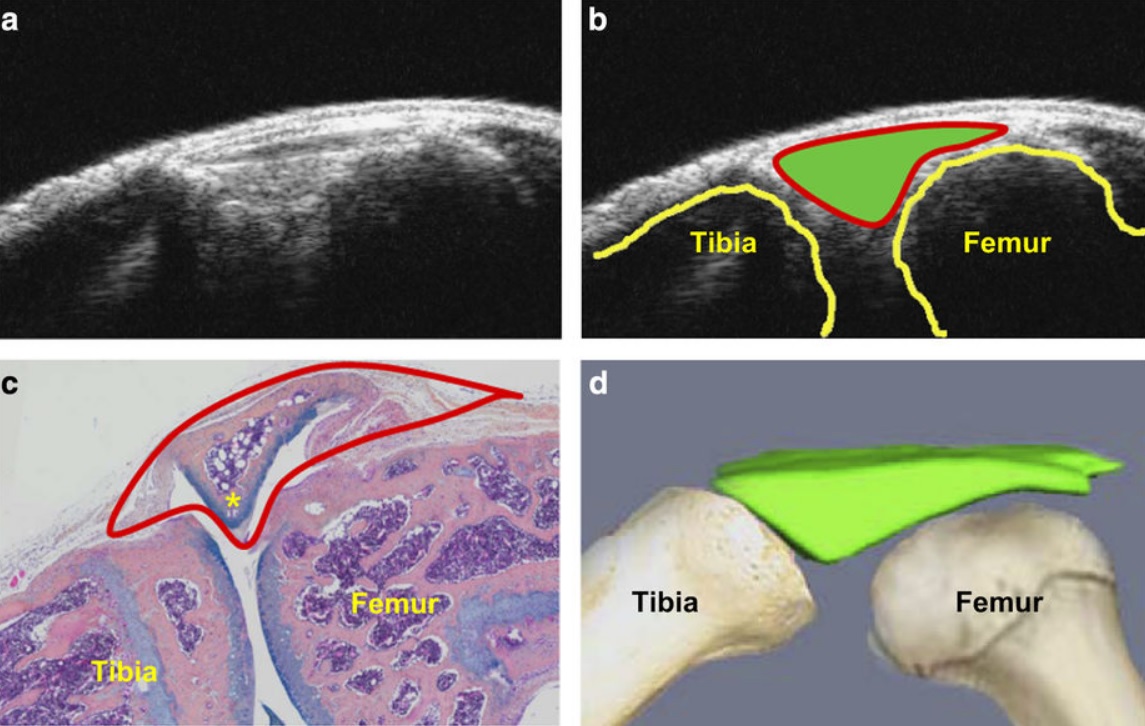
Ultrasound could be a fast and cost-effective means of assessing joint changes in mouse models of posttraumatic osteoarthritis (PTOA). Such models are essential for understanding the biology of this degenerative joint disease and developing new treatments, but noninvasive methods of evaluating disease activity are lacking. Because ultrasound can visualize both joint space volumes and blood flow in the joints, it could provide an alternative to microscopic examination of tissue, assuming it ac... Read more
Hao Xu, Echoe M Bouta, Ronald W Wood, Edward M Schwarz, Yongjun Wang & Lianping Xing
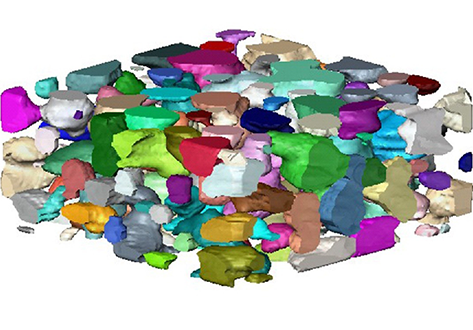
Physical characteristics critical to chromatography including geometric porosity and tortuosity within the packed column were analysed based upon three dimensional reconstructions of bed structure in-situ. Image acquisition was performed using two X-ray computed tomography systems, with optimisation of column imaging performed for each sample in order to produce three dimensional representations of packed beds at 3 μm resolution.
Read more
Department of Biochemical Engineering, University College London | Pall Life Sciences, Portsmouth | Electrochemical Innovation Lab, Department of Chemical Engineering, University College London
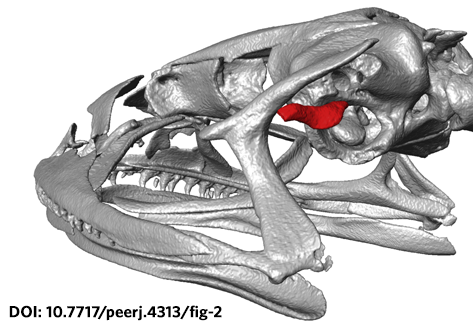
The loss of hearing structures and loss of advertisement calls in many terrestrial breeding frogs (Strabomantidae) living at high elevations in South America are common and intriguing phenomena. The Andean frog genus Phrynopus Peters, 1873 has undergone an evolutionary radiation in which most species lack the tympanic membrane and tympanic annulus, yet the phylogenetic relationships among species in this group remain largely unknown. Here, we present an expanded molecular phylogeny o... Read more
May R, Lehr E, Rabosky DL. PeerJ 6:e4313
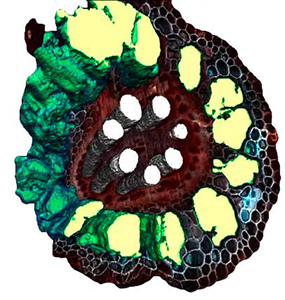
L4iS uses Avizo software to analyze 3D images from laser ablation tomography
Lasers for Innovative Solutions, LLC (L4iS) is developing a new class of tomography technology with the aim of allowing material characterization in three dimensions with sub-micron resolution. The method uses a nanosecond, Q-switched, pulsed ultraviolet laser coupled with high-resolution imaging to generate highly detailed specimen models. Using this system, sequential images similar to light-sheet fluorescence microscopy are used to digitally reconstruct the specimen.
Read more
Brian Reinhardt and Benjamin Hall, L4iS (USA)
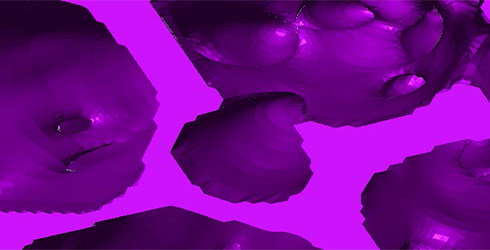
FAMU uses Avizo software to visualize and understand heat transfer and fluid flow
The CHEFF (Computational Heat Fluid Flow) Research group at Florida Agricultural & Mechanical University is using computational fluid dynamics to model flow and heat transfer in various engineering applications for industry, government and the private sector. The primary goal of this research is to first examine and then enhance the thermal performance of current and future low-density reticulated porous media, and explore their use as heat sinks in high power electronics (computer chips... Read more
CHEFF Research Group at Florida Agricultural & Mechanical University: Dr. G.D. Wesson, Professor of Chemical Engineering/Biological Agricultural Systems Engineering, Shawn Austin (Graduate student), Shari Briggs (Graduate student), Mellissa McCole (Graduate student), David Mosley (Graduate student)